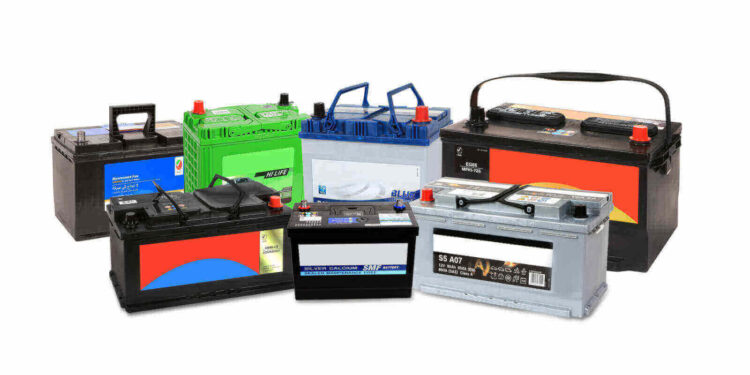Understanding Battery Basics
Car batteries are the heart of a vehicle’s electrical system, responsible for powering everything from starting the engine to keeping the lights and radio on. Understanding the basics of car batteries can empower vehicle owners to make informed choices. Broadly, car batteries can be categorized into two main types: lead-acid and lithium-ion. Lead-acid batteries are the industry standard due to their cost-effectiveness and long track record. They create a chemical reaction involving lead plates and sulfuric acid to produce an electrical current. Conversely, lithium-ion batteries have revolutionized the battery industry by offering a much lighter solution with a longer lifespan and faster recharging capabilities.
For those in Florida seeking a place to choose the correct battery, consider visiting reputable sellers such as batteries Apopka, FL, to explore a selection that fits your needs. The primary purpose of a car battery is to transform stored chemical energy into electrical energy, which powers the vehicle’s starter and electrical systems. Understanding terms like Cold Cranking Amps and Reserve Capacity can significantly impact your battery selection, ensuring it meets your vehicle’s specific requirements.
Factors to Consider When Choosing a Car Battery
- Cold Cranking Amps (CCA) and Why It’s Important: Cold Cranking Amps (CCA) is a key specification when selecting a car battery, indicating its ability to start an engine in cold temperatures. CCA measures the number of amps a 12-volt battery can deliver at 0°F (-18°C) for 30 seconds while maintaining a voltage of at least 7.2 volts. This is crucial information if you live in a region that experiences harsh winters, as cold weather can thicken engine oil, demanding more power from the battery to start the engine. Ensuring the battery has an appropriate CCA rating can prevent a situation where your car won’t start on a cold morning. For more guidance on selecting the correct battery for your needs, Consumer Reports offers a detailed buying guide that helps you navigate various battery options based on performance factors like CCA, lifespan, and reliability.
- Battery Capacity: Matching Your Vehicle’s Needs: Battery capacity, typically expressed in Ampere-hours (Ah), measures how long a battery can sustain an energy supply to your vehicle’s systems before needing to be recharged. A higher-capacity battery can provide a steady power supply for extended periods, which is especially useful in vehicles with numerous power-consuming accessories. Checking your vehicle’s manual for the recommended battery capacity ensures that your new battery aligns with the manufacturer’s specifications, optimizing vehicle performance and reliability.
- Size and Fit – Ensuring Compatibility with Your Vehicle: Car battery sizes are standardized into group sizes, which indicate the battery’s physical dimensions, terminal orientations, and type. Ensuring the battery you choose fits securely into your vehicle’s designated battery tray is crucial for preventing movement that could cause damage. Additionally, it’s vital to ensure that the terminals of the new battery match those of your vehicle to avoid installation difficulties. You can usually find the recommended group size in your vehicle’s owner’s manual or on the current battery label in your car.
Understanding Battery Maintenance
- Essential Maintenance Tips to Prolong Battery Life: Proper maintenance can significantly extend the lifespan and improve performance. Start regularly inspecting the battery terminals and cables for corrosion, which is typically indicated by a white, powdery substance. Cleaning any corrosion ensures a good electrical connection. It’s also important to check that the battery is securely fastened, as vibrations can cause damage. Additionally, avoid leaving the car accessories on when the engine isn’t running to prevent unnecessary draining of the battery’s charge.
- Signs It Might Be Time for a Replacement: Recognizing when to replace your car battery can prevent inconvenient breakdowns. Typical indicators that a battery is approaching the end of its lifespan include a sluggish engine start, weak headlights, and the Check Engine light illuminating the dashboard. Corrosion around the terminals or physical damage to the battery casing indicates that the battery needs to be replaced. Most batteries have a lifespan of about three to five years, and replacing a battery beyond its prime can avert future issues.
How to Ensure Longevity and Performance
- Effects of Climate on Battery Performance: Climate has a significant impact on battery performance and lifespan. While the chemical reactions within a battery slow in cold temperatures, leading to power issues, excessive heat can increase battery fluid evaporation, damaging the battery’s internal structure. In hot climates, it’s crucial to have regular battery inspections to mitigate risks related to thermal damage. Opting for batteries with higher resistance to temperature extremes can also ensure consistent performance across seasons.
- Understanding the Impact of Driving Habits: Your driving habits directly impact your battery’s health and lifespan. Short trips of less than 20 minutes can prevent the battery from fully charging, while longer drives are better for maintaining a full charge. Incorporating regular, longer trips can help ensure the battery’s full cycling, thus extending its usable life. Additionally, if your vehicle remains idle often, consider using a trickle charger to preserve battery life and avoid total discharge.
- The Role of Regular Inspections: Frequent battery check-ups are a reliable method for identifying potential problems in advance. While inspecting, look for physical harm to the battery case, indications of significant leakage, and the condition of the electrolyte levels in operational batteries. A yearly evaluation by a skilled technician can detect any hidden issues within the electrical system before they escalate, guaranteeing that your battery operates effectively for its entire lifespan.
Environmental Impact and Recycling
- Why Recycling Car Batteries is Essential: The environmental impact of car batteries is a growing concern due to the hazardous nature of their components, such as lead and acid. Recycling car batteries prevents these materials from contaminating the Earth and allows for the recovery and reuse of valuable resources. Recycling processes recapture the lead and plastic, which are then used to create new batteries, conserving natural resources and reducing pollution.
- How the Industry is Moving Towards Sustainability: The automotive industry is taking significant steps toward sustainability by developing more eco-friendly battery technologies. Advances in technology not only reduce the dependency on harmful materials but also improve energy efficiency. The shift toward such sustainable practices is central to reducing the automotive sector’s overall carbon footprint and promoting a greener, more sustainable environment.
Making an Informed Purchase Decision
- Reading Reviews and Customer Feedback: Customer feedback and reviews can provide insights into actual performance in the real world. They can provide valuable insights into how a battery performs under various conditions and help identify common issues, such as short lifespans or frequent maintenance needs. Prioritizing batteries with consistent positive reviews can prevent frustrations and ensure satisfaction with your purchase.
- Consulting with Automotive Experts: Consulting with automotive experts can provide unparalleled insight tailored to your vehicle’s needs. An expert can recommend the best battery options, taking into account the vehicle’s make and model, driving conditions, and personal preferences. Utilizing expertise in decision-making ensures that you receive a product that meets all your expectations.







